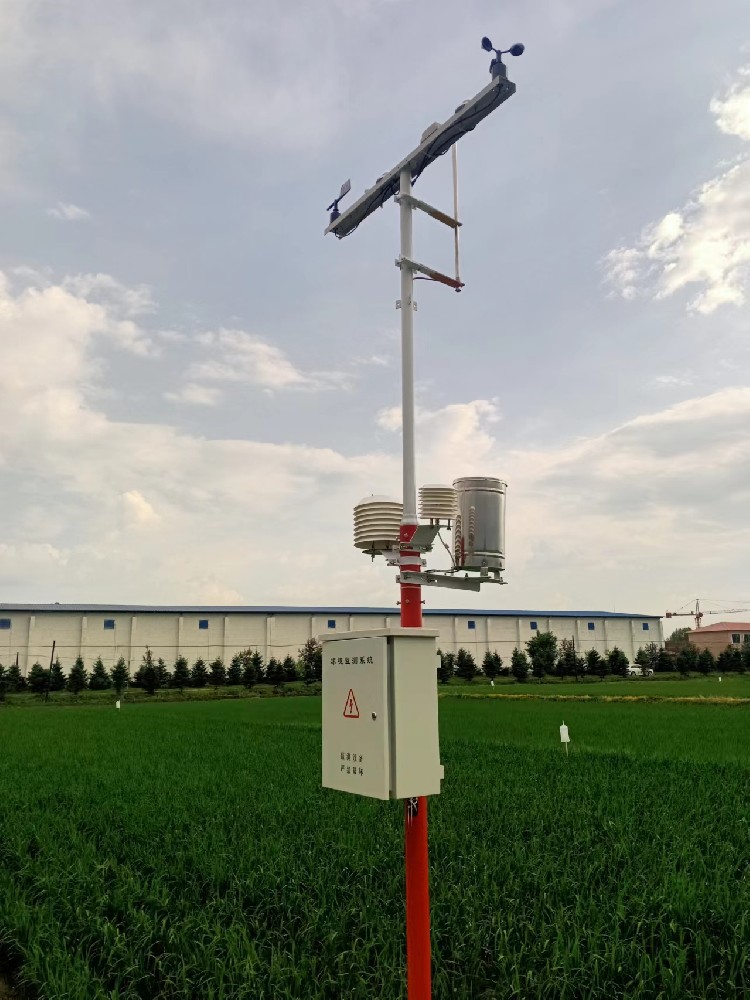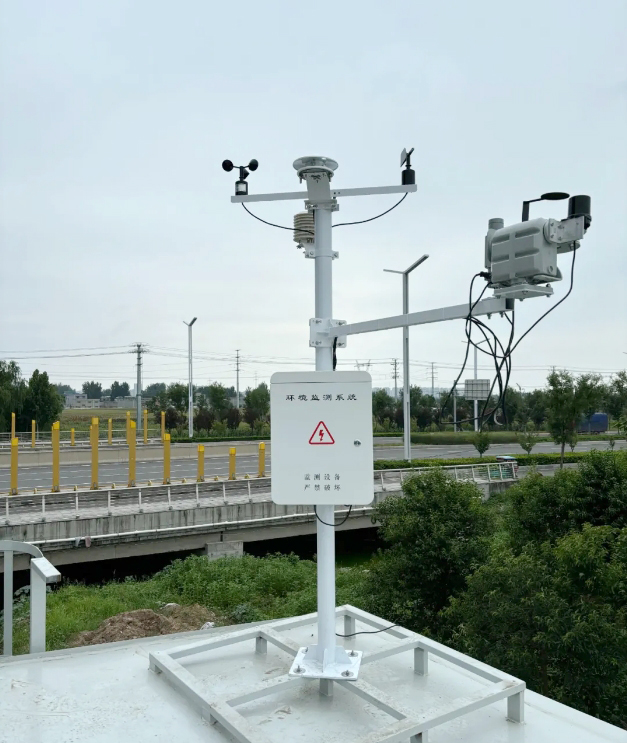

— Blogs —
—Products—
 Consumer hotline +8618073152920
Consumer hotline +8618073152920 WhatsApp:+8615367865107
Address:Room 102, District D, Houhu Industrial Park, Yuelu District, Changsha City, Hunan Province, China
Product knowledge
Time:2024-10-16 16:43:10 Popularity:323
Research weather station is a kind of high-precision and high-performance meteorological monitoring equipment, which is mainly used in the fields of scientific research and meteorological monitoring. It can provide accurate meteorological data to support meteorological research, meteorological prediction and meteorological disaster warning.
Research Weather Station is a professional meteorological observation system used in scientific research and environmental monitoring. It can provide high-precision, multi-parameter meteorological data for climate research, weather forecasting, ecological monitoring, agricultural science and other fields.
Research weather stations are usually equipped with a variety of sensors to measure and monitor various meteorological elements. The following are some common sensors and their functions:
1. Temperature sensor: Used to measure the temperature of the air or ground surface, usually in degrees Celsius (°C) or degrees Fahrenheit (°F).
2. Humidity Sensor: Used to measure the humidity of the air, usually expressed in relative humidity (%).
3. Barometric pressure sensor: Used to measure atmospheric pressure, usually expressed in Pascals (Pa) or millibars (mb).
4. Wind speed sensor: Used to measure the speed of the wind, usually expressed in meters per second (m/s) or kilometers per hour (km/h).
5. Wind direction sensor: Used to measure the direction of the wind, usually expressed in degrees (°) or azimuth (such as north, east, south, west, etc.).
6. Precipitation sensor: Used to measure the amount of precipitation, usually expressed in millimeters (mm).
7. Solar Radiation Sensor: Used to measure the intensity of solar radiation, usually expressed in watts per square meter (W/m²).
8. soil moisture sensors: measure soil moisture, function to monitor soil moisture, useful for agricultural production and ecological research.
9. Light sensor: Measures light intensity, function is to provide data on sunlight, which affects plant photosynthesis and solar energy utilization.
10. CO2 Sensor: Measures the concentration of carbon dioxide, its function is to monitor the level of CO2 in the atmosphere, which is essential for climate change research.
11. PM2.5 sensor/PM10 sensor: monitors air quality and assesses environmental pollution.
In addition, research weather stations can be equipped with other special sensors for measuring specific meteorological parameters such as atmospheric composition, aerosols, clouds, ozone layer, and so on.
1. High precision: the scientific research weather station adopts high-precision sensors, which can ensure the accuracy and reliability of the data.
2. Multi-parameter monitoring: it can monitor a variety of meteorological elements at the same time, providing comprehensive meteorological data support for researchers.
3. Automation and Intelligent: realize all-weather, unattended automatic operation, through the integration of intelligent control system, it can automatically collect, process and transmit data according to the preset procedures.
4. Networking and informatization: It is closely integrated with the Internet, Internet of Things and other technologies to realize real-time data transmission and sharing, and construct a meteorological information network with wide coverage and fast response speed.
5. Long-term stability: research meteorological stations need to run for a long time and withstand various environmental conditions, so it is important to choose highly stable and durable equipment.
6. Expandability: Sensors can be added or replaced according to research needs.
7. Data storage and processing: with data storage and remote transmission function, easy to analyze the data.
8. Flexible deployment and self-adaptation: adapt to various terrain and climate conditions, easy to install and move.

1. Define the needs: According to the specific needs of the scientific research project, determine the meteorological elements that need to be monitored and the accuracy requirements.
2. Examine the performance: choose a scientific research weather station with high precision, high stability and reliability to ensure the accuracy and reliability of the data.
3. Understand the technology: Understand the sensing technology and data processing technology adopted by the scientific research weather station to ensure that it can meet the needs of the scientific research project.
4. Consider the cost: according to the budget and the importance of the research project, choose a cost-effective research weather station.
5. After-sales service: choose a supplier that provides good customer support and service to ensure timely technical support and problem solving in the process of use.
6. Consideration of environmental adaptability: Ensure that the weather station can adapt to different environmental and climatic conditions.
7. data management and transmission: select a system with good data storage and remote transmission capabilities.
8. data accuracy and response time: select sensors with appropriate accuracy and fast response according to the research requirements. 9. communication and data processing capability.
9. Communication and data processing capabilities: Ensure that the system supports the required communication methods and data management software. 10.
10. Scalability: Choose a system that can be upgraded as research needs grow.
1. Rapid installation and movement: lightweight design, simple and quick installation process, without the need for complex tools or professional installation team, enabling researchers to quickly set up or transfer equipment in different locations, adapting to changing research needs and environmental conditions.
2. Adaptable to various environments: Whether it is plains, mountains, deserts, forests or waters, research weather stations usually have weather-resistant housings and components, which can adapt to a variety of harsh natural environments and ensure stable operation in different terrains and climatic conditions.
3. Portable design: compact size, easy to carry, and some are even designed to be collapsible or modular, easy to transport and storage, suitable for short-term or long-term fixed-point monitoring in the field.
4. Self-sufficient energy supply: many scientific research meteorological stations adopt solar power supply, which reduces the dependence on fixed power supply and ensures long-term operation in remote or unpowered areas.
5. wireless communication technology: using wireless transmission technology, such as satellite communication or wireless networks, research weather stations can transmit data back to the data center in real time, eliminating the need for on-site data collection, streamlining the process of obtaining data, and enhancing deployment flexibility.
6. Customized Configuration: According to the specific needs of the research, the sensor configuration of the research weather station can be flexibly adjusted, and the user can select the specific meteorological parameter measurement module needed to achieve personalized deployment.
7. Instant Response and Adjustment: In the face of sudden scientific research needs or emergencies, the scientific research weather station can quickly respond to adjust the deployment location or increase the monitoring program to provide immediate data support for scientific research.
In summary, the flexible deployment of scientific research weather stations is not only reflected in the physical convenience of movement, but also includes the flexibility of technical configuration, self-sufficiency of energy supply and instantaneous data communication, which together ensure the efficiency and adaptability of scientific research activities.

The ways in which small weather stations for research adapt to the demands of complex environments are manifold:
1. high integration and lightweight design: these weather stations are small and lightweight, easy to carry to remote or hard-to-reach areas, such as mountains, deserts, forests, etc., to meet the monitoring needs of different terrains.
2. Diversified Sensors: Equipped with a variety of meteorological sensors, capable of simultaneously monitoring temperature, humidity, wind speed, wind direction, barometric pressure, rainfall, etc., to ensure that comprehensivemeteorological data can be obtained in complex environments.
3. solar energy and battery management system: solar charging system, equipped with efficient battery management, to ensure long-term stable operation in the field without grid coverage, to adapt to the energy needs of extreme climatic conditions.
4. Weather-resistant materials: the shell and components use materials that are resistant to extreme temperature, humidity, wind and sand erosion, ensuring durability and data accuracy in harsh environments.
5. Intelligent communication technology: support RS485, Ethernet, WIFI, LORA, 4G and other communication methods, even in remote areas can realize the remote transmission of data to ensure the immediacy of information.
6. Flexible Installation: Provide various installation bases such as triangular bracket, ground spike flange, etc. to adapt to different installation environments such as flat, uneven, and mobile to ensure stability and mobility.
7. Customized Configuration: According to the specific environment and needs of the research, users can customize the sensor configuration, such as adding PM2.5 monitoring in forest research, adding soil temperature and humidity sensors in agricultural research.
8. Software support and data analysis: Equipped with an intelligent software system, it can analyze the collected data in real time and provide early warning to help researchers respond quickly to environmental changes.
9. Environmental Adaptability Test: During the design and production process, the small weather station for scientific research will undergo a rigorous environmental adaptability test to ensure that it can still work properly under extreme conditions.
Through these comprehensive measures, the small weather station for scientific research can effectively cope with the complex and changing natural environment and provide reliable data support for scientific research.
Summarize:
Scientific research weather station is a high-precision and high-performance meteorological monitoring equipment, which can provide accurate meteorological data through a variety of sensors to support meteorological research, meteorological prediction and meteorological disaster warning. When choosing a research weather station, you need to define the requirements, examine the performance, understand the technology, accuracy, environmental adaptability, data management, consider the cost and after-sales service. By choosing the right research weather station, it can provide strong data support for research projects and promote the development of meteorological science.
Related recommendations
Sensors & Weather Stations Catalog
Agriculture Sensors and Weather Stations Catalog-NiuBoL.pdf
Weather Stations Catalog-NiuBoL.pdf
Related products
 Combined air temperature and relative humidity sensor
Combined air temperature and relative humidity sensor Soil Moisture Temperature sensor for irrigation
Soil Moisture Temperature sensor for irrigation Soil pH sensor RS485 soil Testing instrument soil ph meter for agriculture
Soil pH sensor RS485 soil Testing instrument soil ph meter for agriculture Wind Speed sensor Output Modbus/RS485/Analog/0-5V/4-20mA
Wind Speed sensor Output Modbus/RS485/Analog/0-5V/4-20mA Tipping bucket rain gauge for weather monitoring auto rainfall sensor RS485/Outdoor/stainless steel
Tipping bucket rain gauge for weather monitoring auto rainfall sensor RS485/Outdoor/stainless steel Pyranometer Solar Radiation Sensor 4-20mA/RS485
Pyranometer Solar Radiation Sensor 4-20mA/RS485
Screenshot, WhatsApp to identify the QR code
WhatsApp number:+8615367865107
(Click on WhatsApp to copy and add friends)